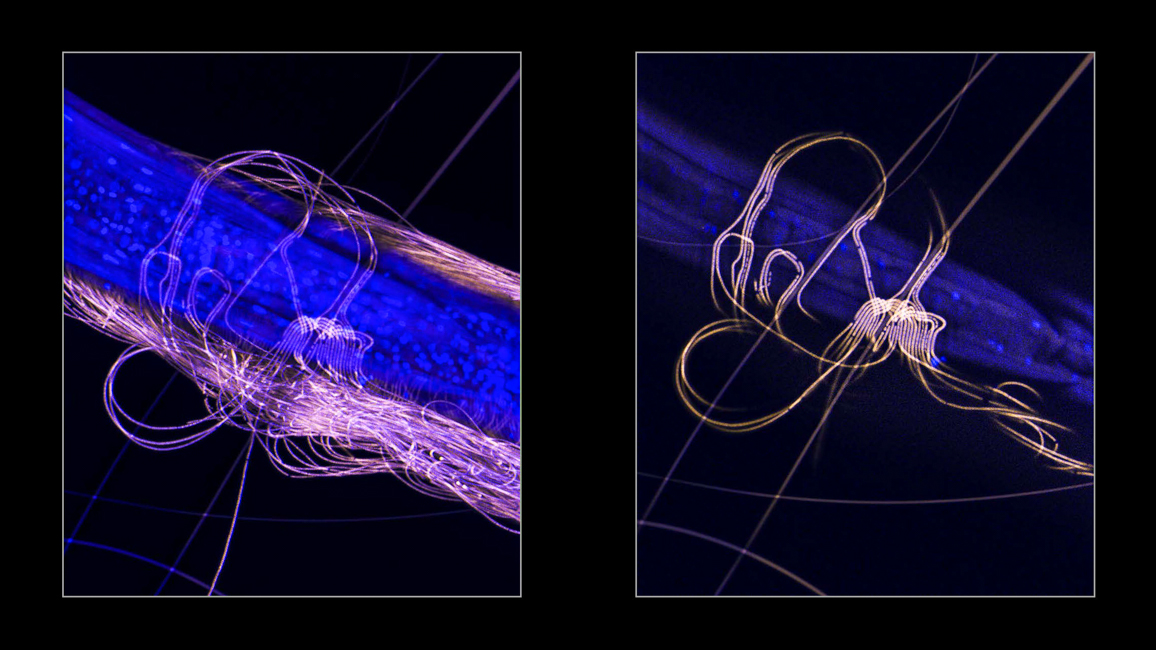Pourquoi pas les abysses?
THE FILM "POURQUOI PAS LES ABYSSES?"
The film "Pourquoi pas les abysses ?" presented at the "Deep Sea Biology symposium" in Océanopolis (Brest). A film produced by IFREMER and directed by Gilles Martin.
The great project of the IFREMER
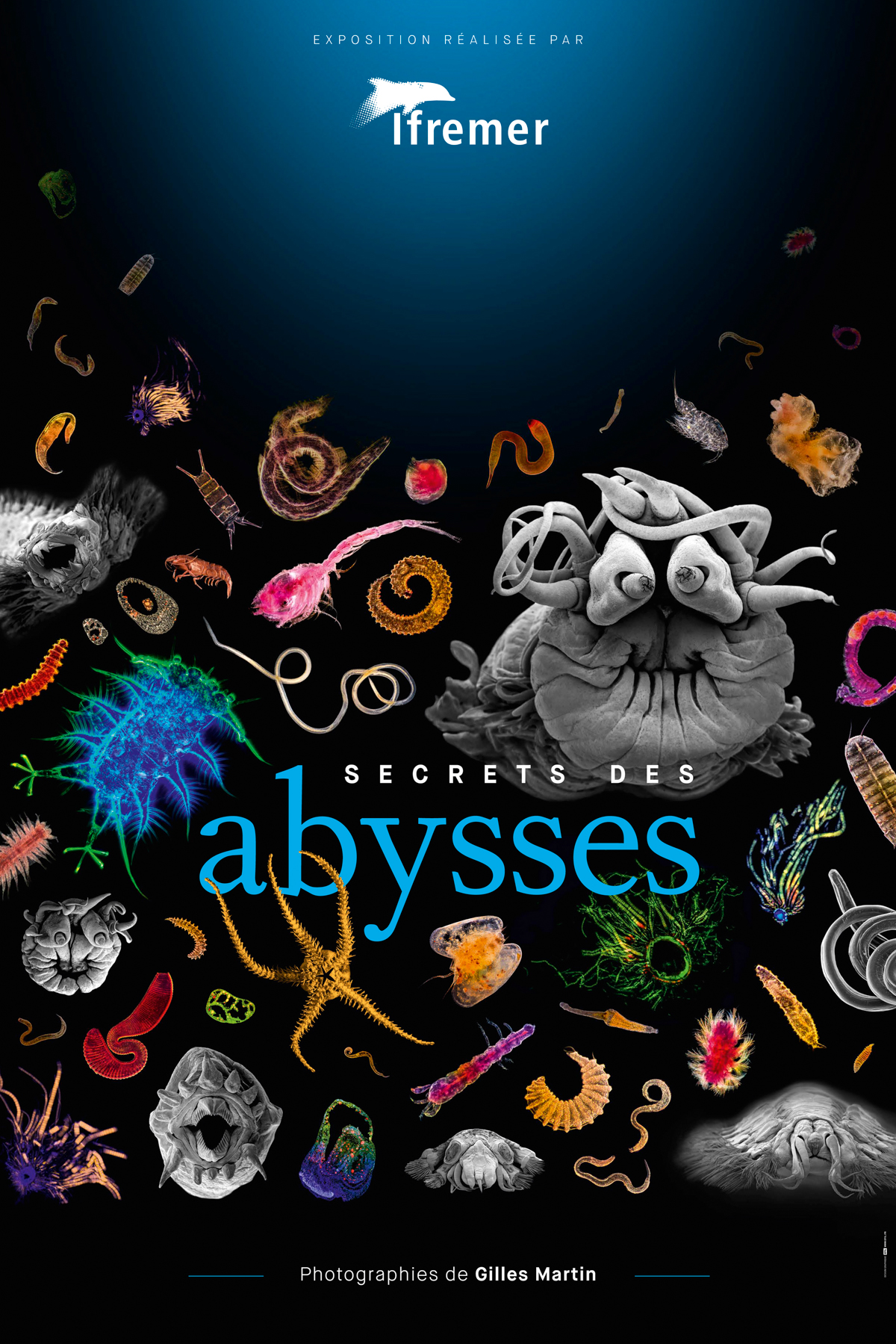 © Gilles Martin / Ifremer
© Gilles Martin / Ifremer
Dive in the deep blue sea with Daniela Zeppilli and Gilles Martin and follow the great project of the IFREMER "Pourquoi pas les abysses ?". New photographs will be published throughout the adventure until the beginning of the travelling exhibition which will start from Brest around the end of 2019.
The ambitious project "Pourquoi pas les abysses ?" aims to increase knowledge of deep water biodiversity. It will help study on a large scale the marine biodiversity patterns in the deep ocean trenches and will enable progress toward the identification of these lesser-known species. This scientific project is carried by some thirty researchers, such as the Italian oceanographer Daniela Zeppilli. She is known worldwide and has an expert knowledge of communication and science popularization.
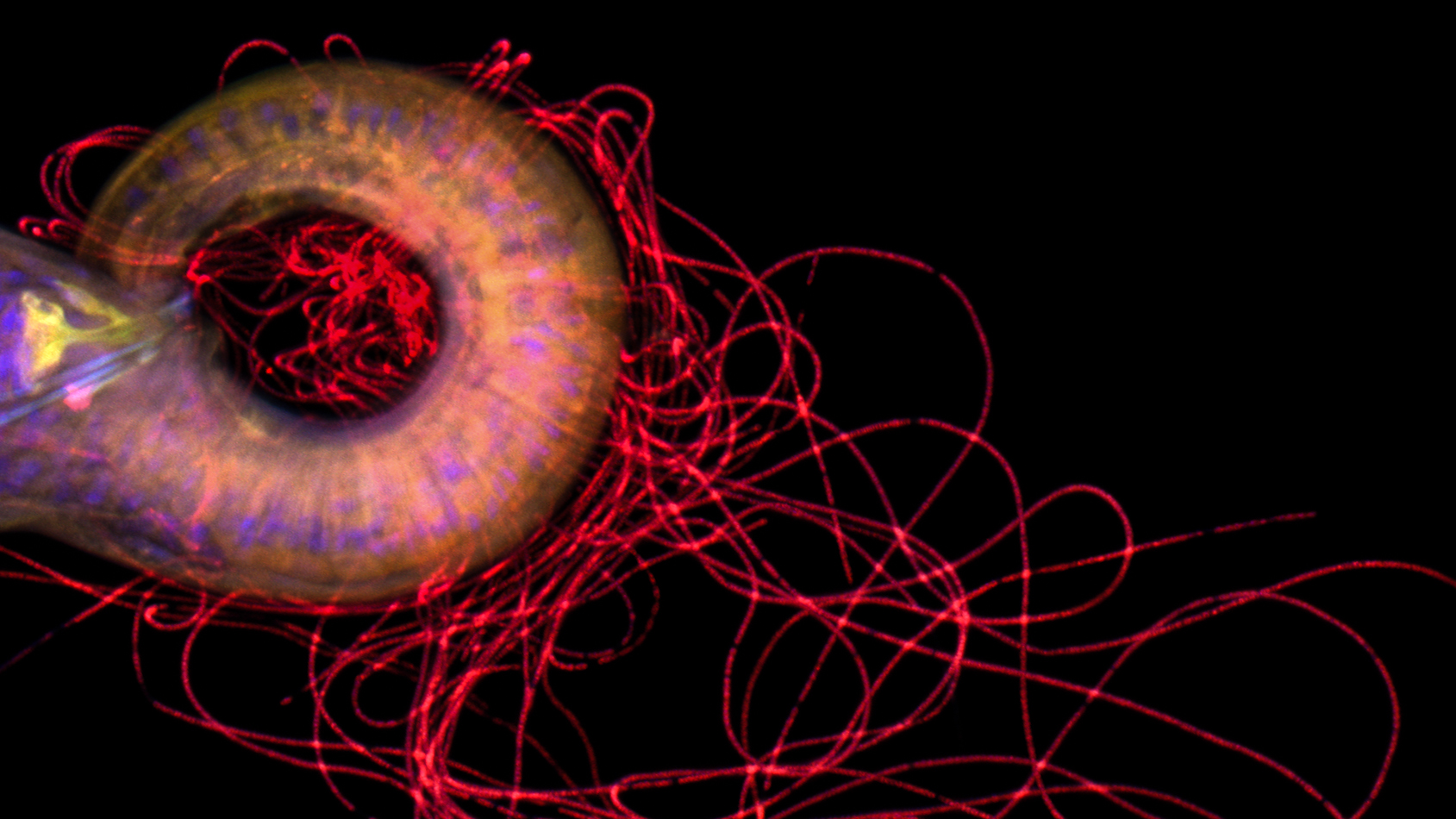 Bacteria: Gammaproteobacteria. Fluorescence microscope of the Ifremer laboratory in Brest.
Bacteria: Gammaproteobacteria. Fluorescence microscope of the Ifremer laboratory in Brest.
© Gilles Martin/ Ifremer
RETURN OF THE AMIGO MISSION
Back from an expedition between the Arctic and France on the oceanographic ship the "Pourquoi Pas ?", Gilles Martin invites you to discover his first images of this research campaign designed to inventory the biodiversity of the abyss.
The AMIGO2018 mission between Saint-Pierre-et-Miquelon and Brest is part of a cycle of missions to fuel marine biodiversity inventories. The purpose is to take samples that are then processed to extract the DNA. This allows the new molecular “Barcode” methods to take stock of local species.
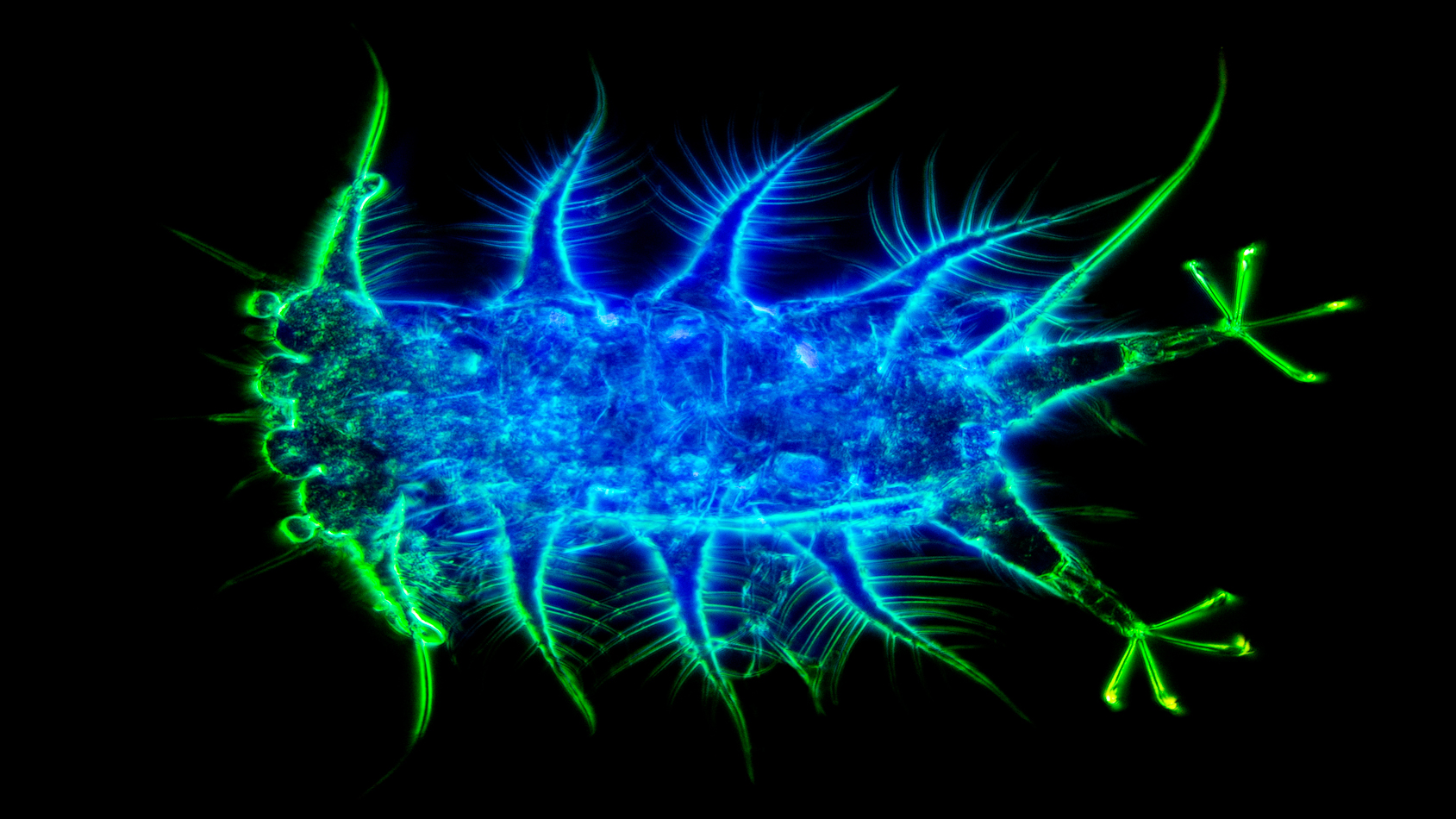 Meiofauna of the abyss © Gilles Martin / Ifremer
Meiofauna of the abyss © Gilles Martin / Ifremer
Throughout this mission Gilles Martin has followed and shared the work of three biologists and researchers all recognized in their fields: Daniela Zeppilli, Julie Poulain and Sophie Arnaud-Haond.
Daniela Zeppilli
A biologist with a doctorate in marine biology and ecology, she is also a researcher in benthic ecology and responsible for the Deep Environment Laboratory at IFREMER. Daniela Zeppilli specializes in nematodes, a group of small worms that dominate meiofauna (all animals less than a millimetre living in all benthic habitats of the planet).
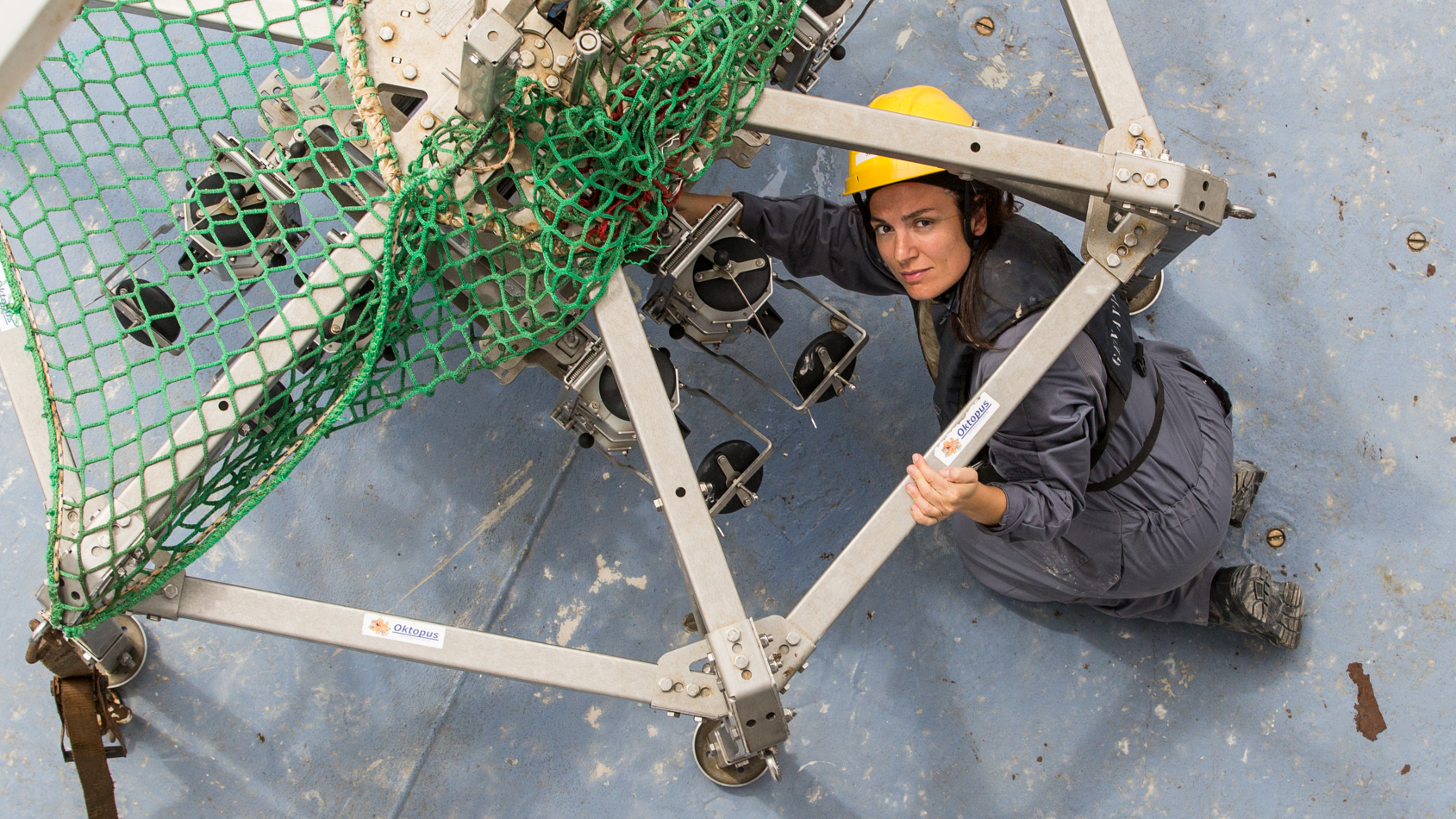 Daniela Zeppili getting the Oktopus to take sample. © Gilles Martin / Ifremer
Daniela Zeppili getting the Oktopus to take sample. © Gilles Martin / Ifremer
Julie Poulain
Research Engineer in Molecular Biology at the Genoscope (CEA National Sequencing Centre), Julie Poulain participated in the Tara Oceans, Tara Polar Circle and Tara Pacific expeditions where she implemented in situ sampling and sequencing. It is with the next generation sequencer, the Minion, already experienced on Tara, that she takes on the "Pourquoi Pas ?" as part of the collaboration IFREMER / Genoscope for the project "Pourquoi Pas Les Abysses ?".
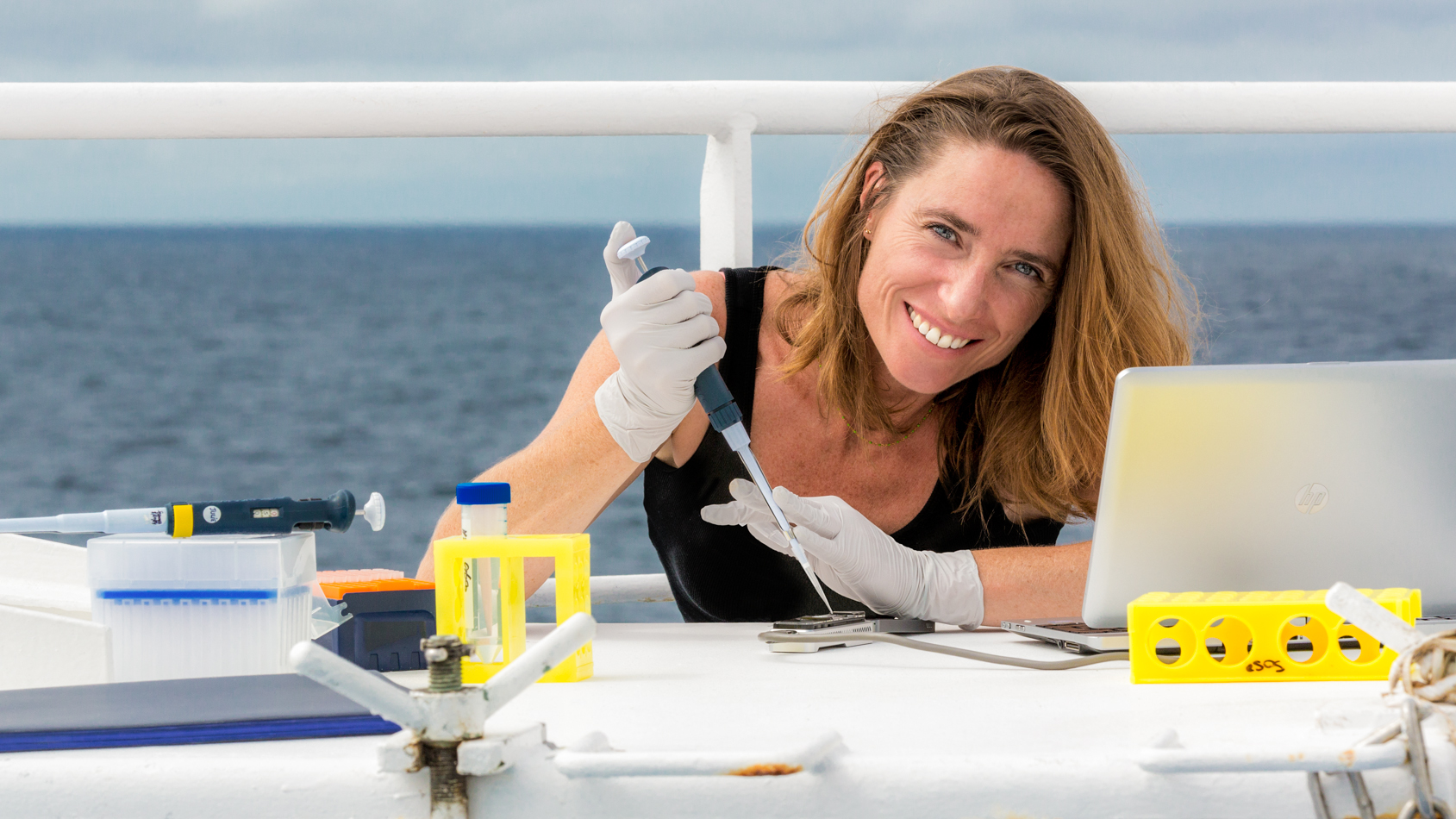 In situ sequencing by Julie Poulain. © Gilles Martin / Ifremer
In situ sequencing by Julie Poulain. © Gilles Martin / Ifremer
Sophie Arnaud-Haond
A researcher at Ifremer for 12 years, she now works on both coastal and deep environments, using tools from molecular biology to study processes invisible to the naked eye. His research focuses on how populations of marine organisms are connected through migration.
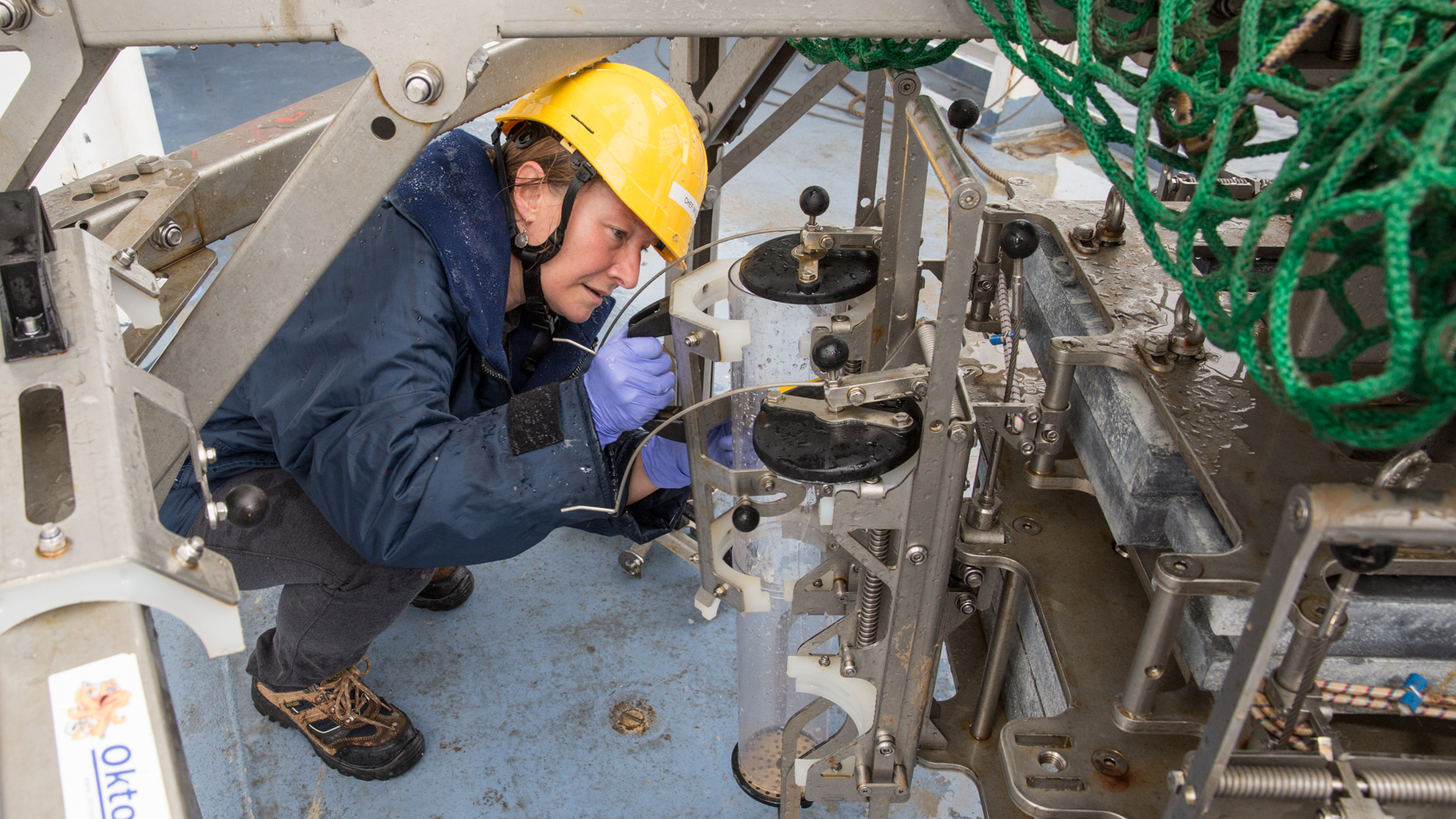 Fine-tuning of the Oktopus before its launching. © Gilles Martin / Ifremer
Fine-tuning of the Oktopus before its launching. © Gilles Martin / Ifremer
The metabarcoding
Metabarcoding and other molecular techniques will enable the detection of DNA sequences of rare species. They will also provide information on the frequency and the dating of potential events in the deep sea, the evolution of great kingdoms of life and ancestral wildlife motions during great geological ages.
Moreover, these molecular techniques might contribute to solve the societal issue on the impact of mining in the deep ocean biodiversity by developing methodologies to define initial conditions, impacts and to set follow-up actions. This work will be based upon studies carried out on fields during oceanographic campaigns dedicated to the deep sea.
"We can hope, from a sample of a seabed sediment, at a depth of 4,000, 5,000, 8,000 meters, to extract the DNA it contains and then make an inventory of the species in the environment.", explains Sophie Arnaud-Haond who leads the project with Florence Pradillon.
Source of the paragraph "The metabarcoding": Pourquoi pas les abysses ? - Ifremer.
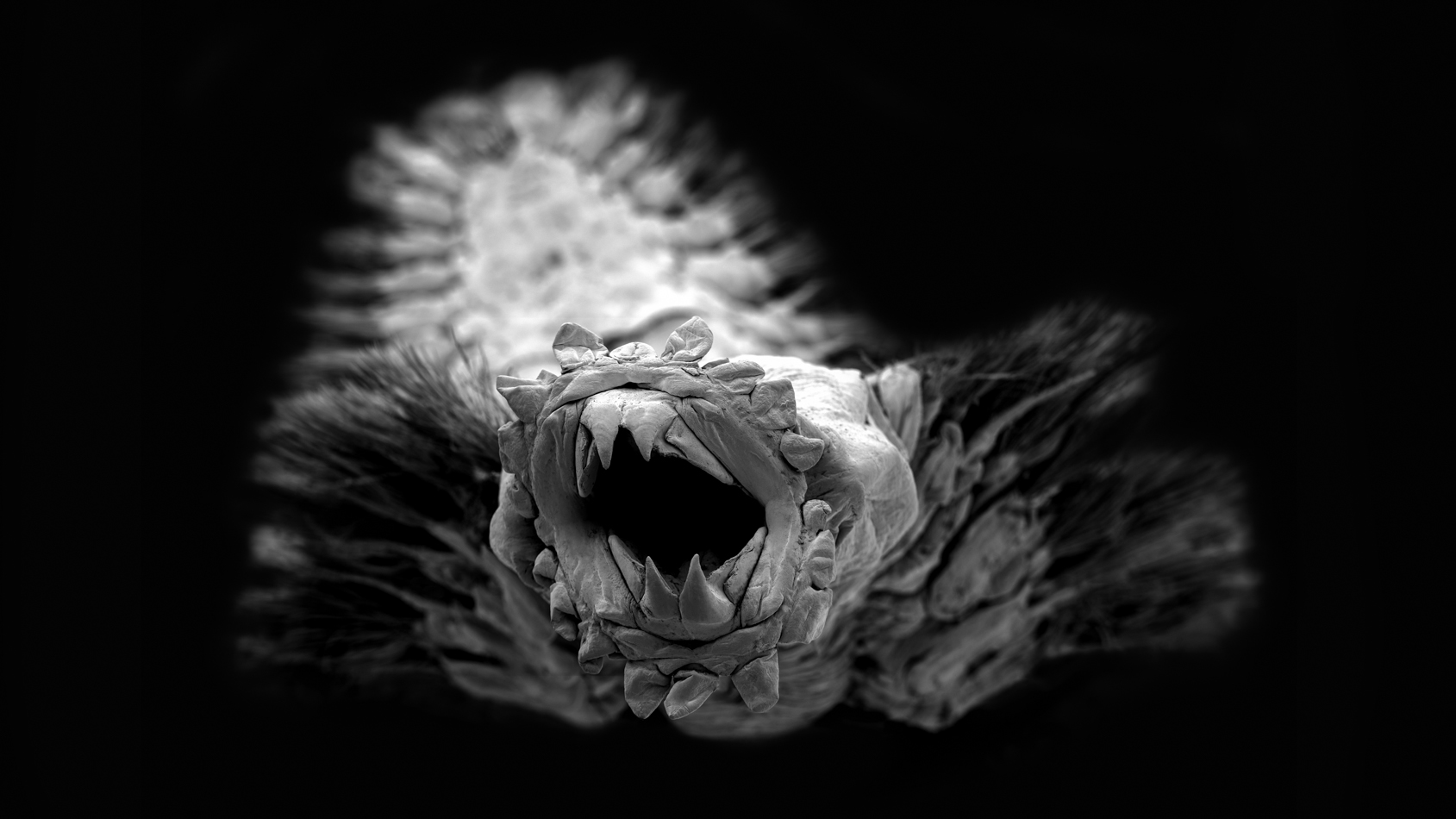 Polychaeta © Gilles Martin / Ifremer
Polychaeta © Gilles Martin / Ifremer
The "POURQUOI PAS ?"
The Pourquoi Pas ? is an oceanographic research vessel named in homage to the Commandant Charcot. This famous French sailor and oceanographer made his polar expeditions aboard four exploration ships of the same name.
Nowadays the Pourquoi Pas ? is part of the deep-sea ships of the IFREMER fleet. The ship is in service since September 27th, 2005.
With a length of almost 110 m, this ship enables the IFREMER to lead several missions such as hydrography, cartography and the deployments of exploration submarines like the Nautile. The French Navy borrows the ship 150 days per year.
The NAUTILE
Designed by the IFREMER in 1984, the Nautile is a submarine which can dive to depths of 6,000 meters. This spherical-shaped submarine has a capacity of three people in 5 cubic meters. It can withstand a pressure range up to 900 bars. Thanks to its resistance, it makes 97% of the deep ocean accessible.
The Nautile is equipped with flashbulbs, cameras and projectors to shot pictures of meiofauna during the expeditions. It has performed over 1,500 expeditions around the world and has permitted to observe famous shipwrecks such as the Titanic.
Exhibition at the festival la mer xxl
Carried-out in partnership with IFREMER, the major exhibition entitled “Pourquoi pas les abysses ?” was presented for the first time in Nantes at the Festival de la Mer XXL in 2019.
Inspired by the universal exhibitions of the early twentieth century, this spectacular and instructive event combining industry, arts, technology, gigantism and immersion attracted more than 100,000 visitors in the exceptional setting of the Parc des expositions de la Beaujoire.
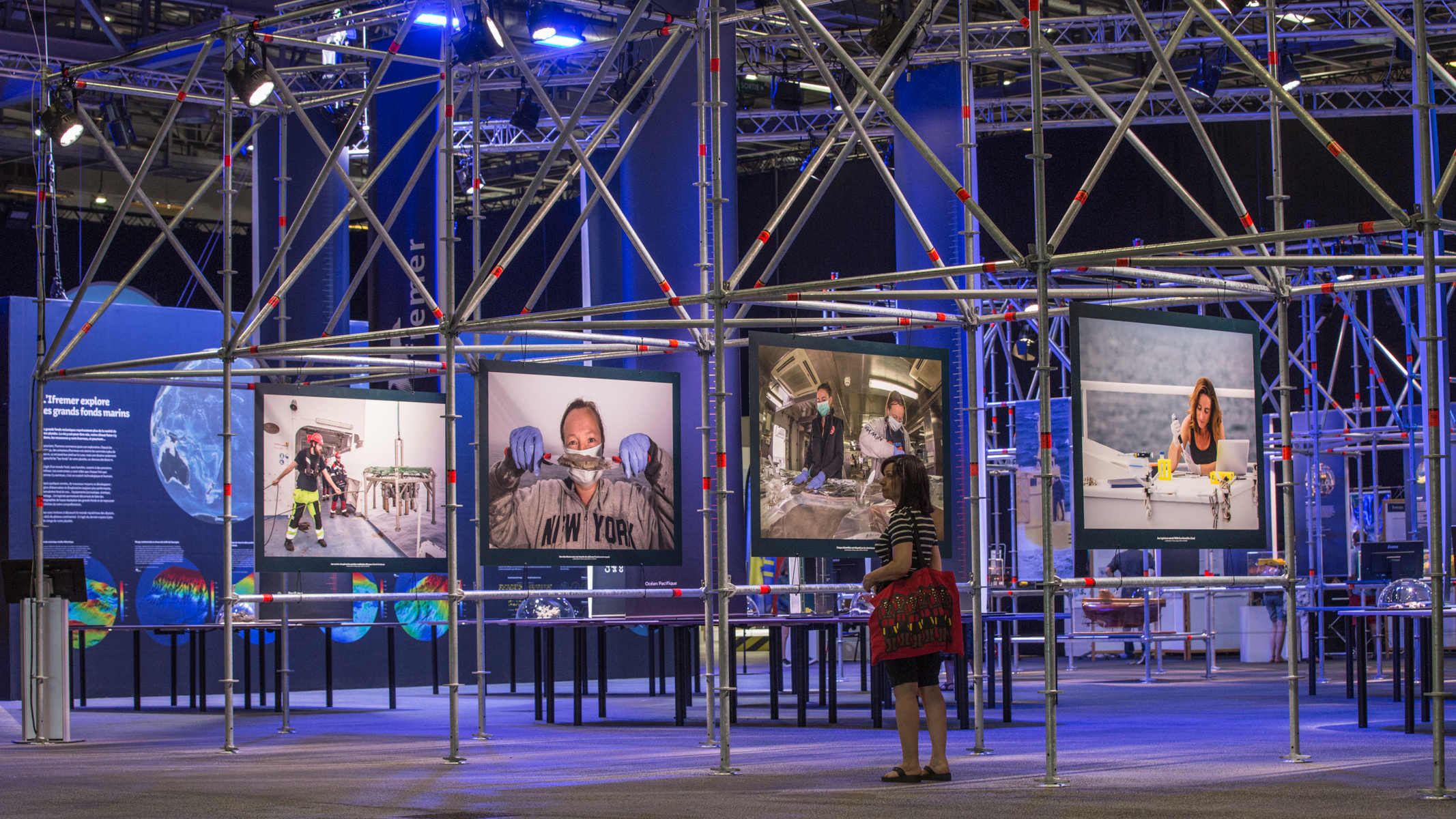 Exhibition « Pourquoi pas les abysses ? » at the festival de La Mer XXL. © Gilles Martin / Ifremer
Exhibition « Pourquoi pas les abysses ? » at the festival de La Mer XXL. © Gilles Martin / Ifremer
exhibition at the lumexplore festival
Exhibition “Secrets of the Abyss” presented at the Lumexplore International Science and Environmental Film Festival in September 2019.
This festival aims to make the general public aware that the world is a vast field of research both underground, in the oceans and in space. It also aims to make younger generations aware of environmental protection.
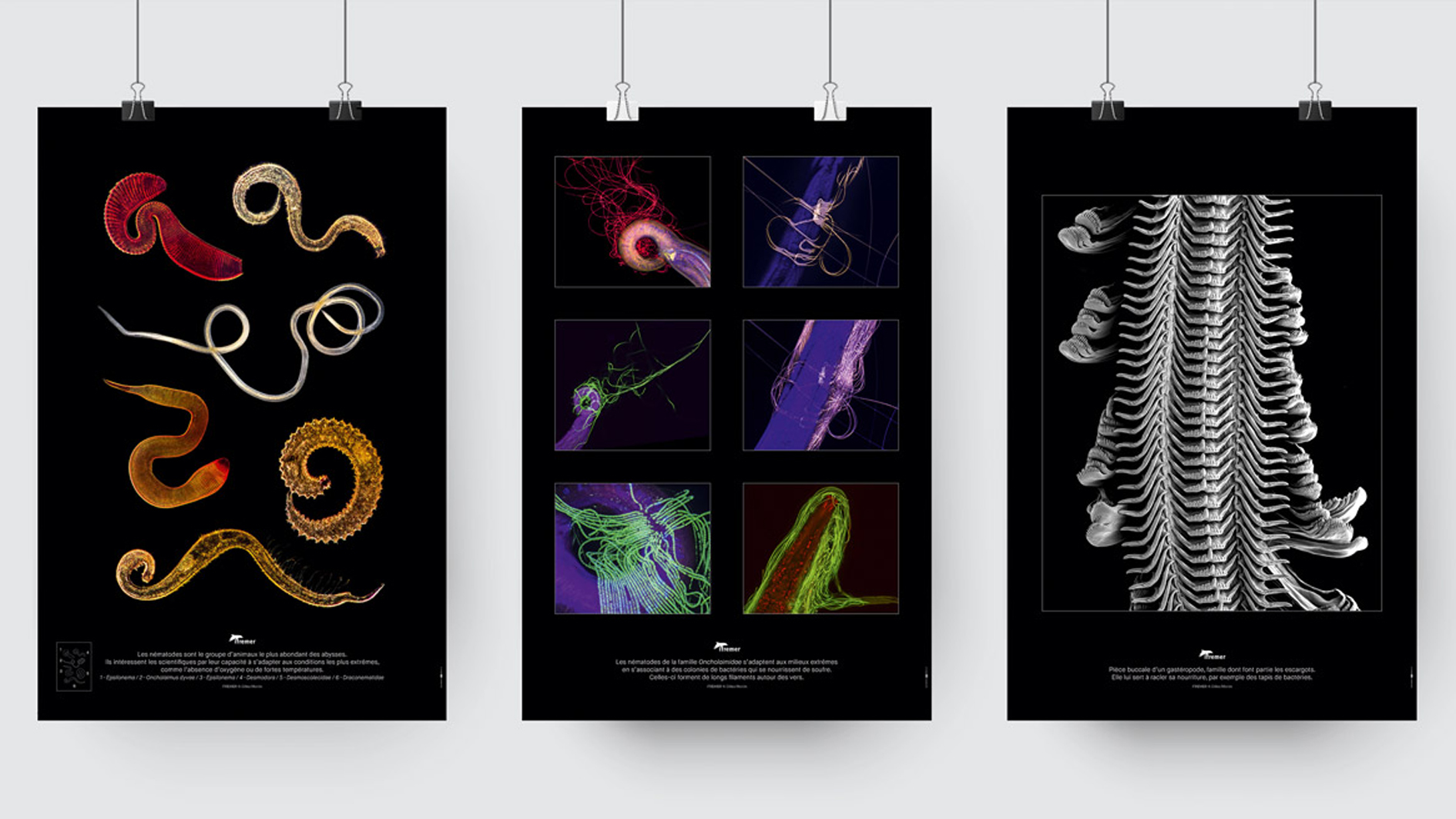 Exhibition “Secrets des Abysses” presented at the Lumexplore International Film Festival for Scientific and Environmental Exploration. This exhibition offers the public large-format photographs in colour and black and white. Educational panels were also created to learn more about the biology and life of meiaufone in the abyss.
Exhibition “Secrets des Abysses” presented at the Lumexplore International Film Festival for Scientific and Environmental Exploration. This exhibition offers the public large-format photographs in colour and black and white. Educational panels were also created to learn more about the biology and life of meiaufone in the abyss.
© Gilles Martin / Ifremer
EXHIBITION AT THE SCIENCE FESTIVAL OF NOIRMOUTIER
Presentation of the exhibition "Secrets des Abysses" at the Noirmoutier Science Festival on the theme of the ocean and man.
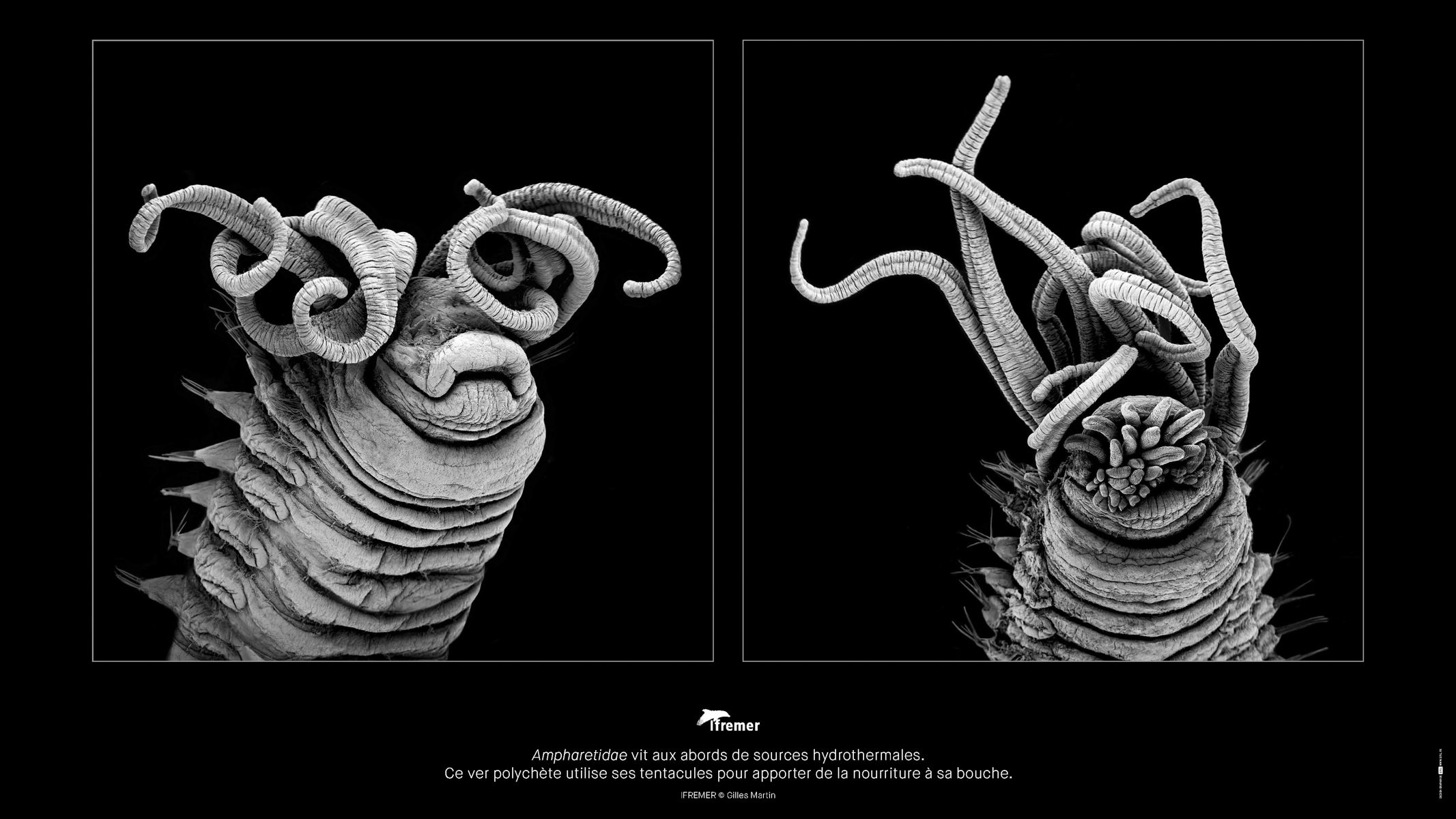 Ampharetidae lives near hydrothermal springs. This polychaete worm uses its tentacles to bring food to its mouth. Gilles Martin/ Ifremer
Ampharetidae lives near hydrothermal springs. This polychaete worm uses its tentacles to bring food to its mouth. Gilles Martin/ Ifremer
EXHIBITION AT NAUSICAá - CENTRE NATIONAL DE LA MER
Located in the ocean beyond 3,000 m depth, only 15% of the abyss has been mapped to date and only 2% has been explored. It is an extraordinary universe populated by animals with astonishing shapes and lifestyles where many species have not yet been identified and described by scientists! The exhibition "Secrets of the Abyss" was presented in December 2019 at Nausicaá, Centre National De La Mer in Boulogne-sur-Mer.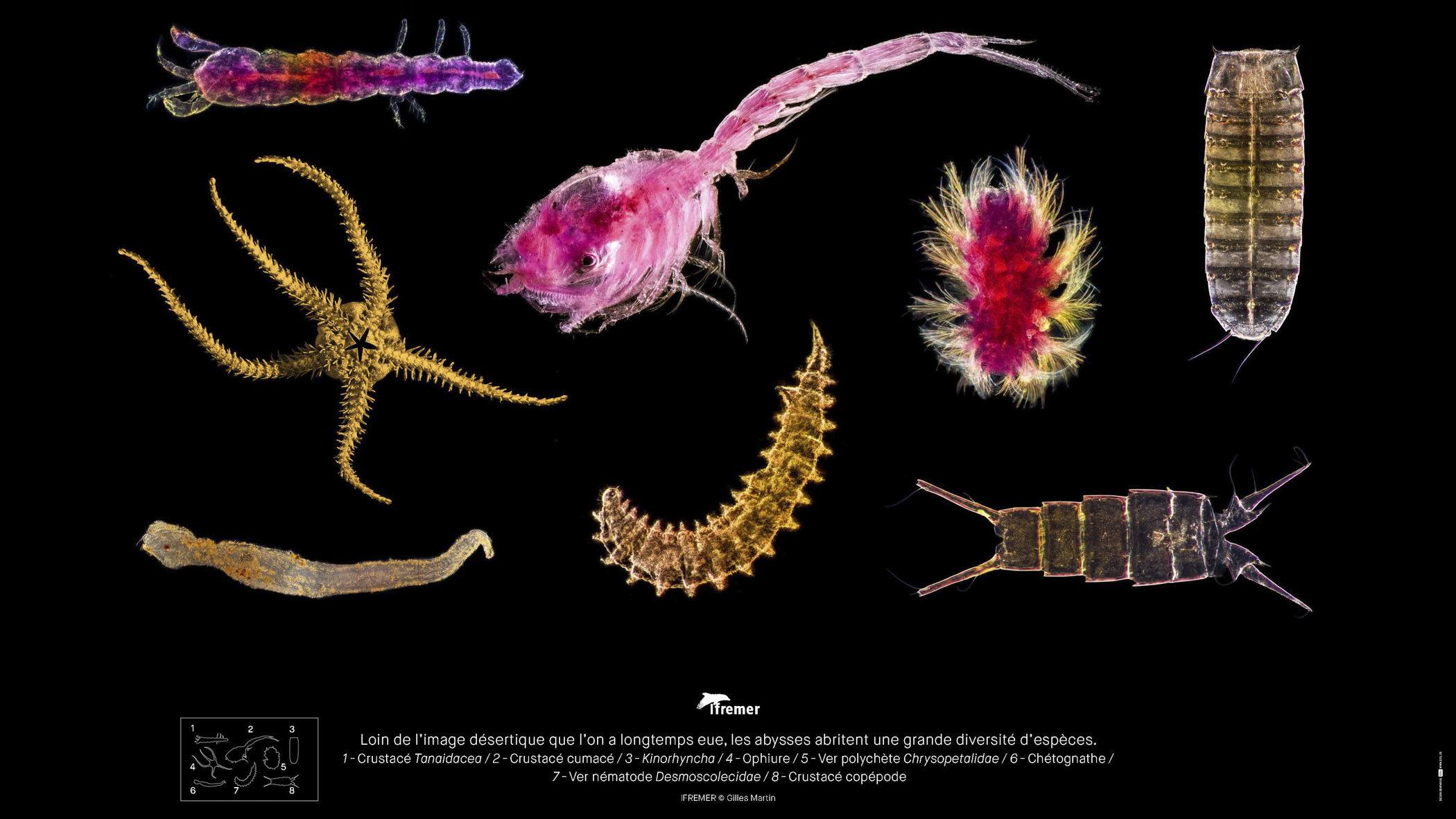 The abyss is home to a wide variety of species : Tanaidacae Crustacean, Cumacean Crustacean, Cinorhyncha, Ophiure, Chrysopetalidae Polychaete Worm, Chetognathe, Desmocolecidae Nematode Worm, Xrustacé Copepode.
The abyss is home to a wide variety of species : Tanaidacae Crustacean, Cumacean Crustacean, Cinorhyncha, Ophiure, Chrysopetalidae Polychaete Worm, Chetognathe, Desmocolecidae Nematode Worm, Xrustacé Copepode.
© Gilles Martin / Ifremer
EXHIBITION AT THE FESTIVAL OF MONTIER-EN-DER
This exhibition offers the public large format photographs in color and black and white. Educational panels have also been created to learn more about the biology and life of the meiofauna of the abyss.
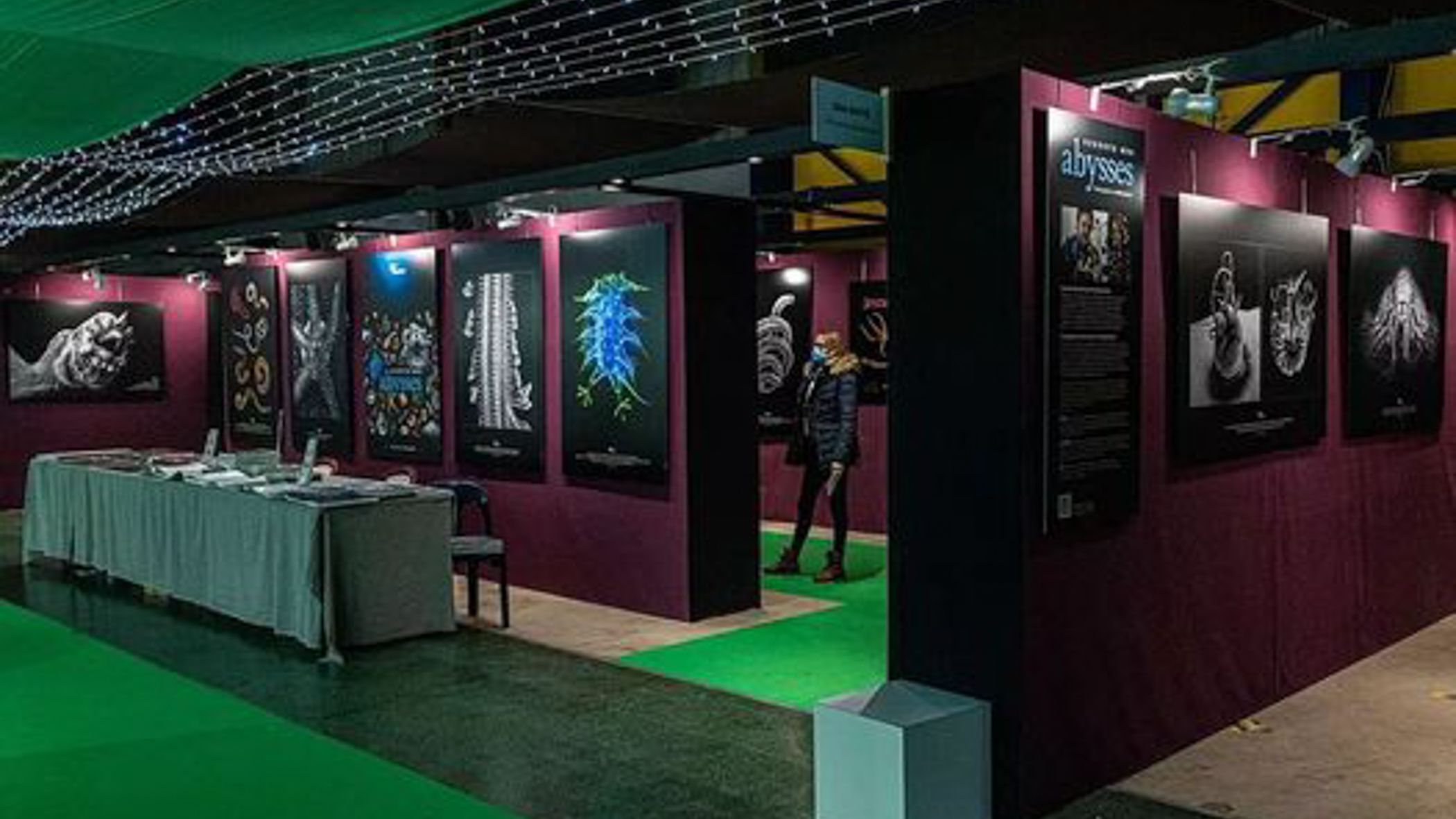 More than 41,000 festival-goers discovered the "Secrets of the Abyss" exhibition during the Montier-en-Der International Wildlife and Nature Photography Festival.
More than 41,000 festival-goers discovered the "Secrets of the Abyss" exhibition during the Montier-en-Der International Wildlife and Nature Photography Festival.
EXHIBITION AT THE FESTIVAL OF THE CAMARGUE
The exhibition "Secrets of the Abyss" and the film "Pourquoi pas les Abysses?" were presented during the 14th edition of the Festival de la Camargue et du Delta du Rhône.
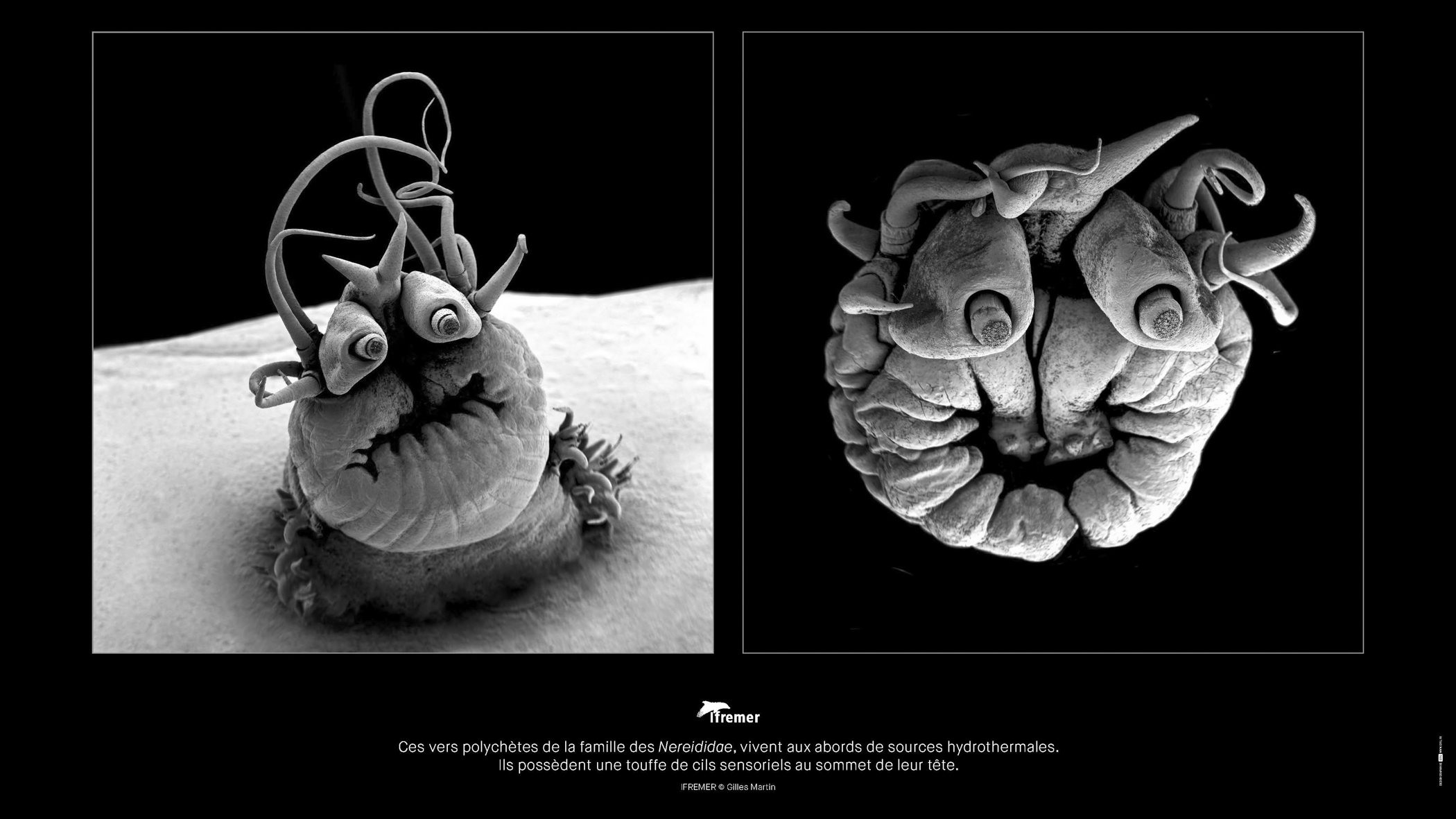 These polychaete worms of the Nerididae family, live in the vicinity of hydrothermal springs. They have a cluster of sensory lashes at the top of their head.
These polychaete worms of the Nerididae family, live in the vicinity of hydrothermal springs. They have a cluster of sensory lashes at the top of their head.
© Gilles Martin / Ifremer
exposition at nausicaá
"Secrets des Abysses" exhibition and screening of the film "Pourquoi pas les Abysses?"
From April 1, 2024 to January 5, 2025 at Nausicaá - Centre National de la Mer.
A challenge in photography
"IFREMER contacted me to take exclusive pictures of meiofauna and macrofauna of the deep ocean (polychaetes, nematodes, crustaceans, echinoderms, molluscs) extracted during different expeditions of the research ship called Pourquoi pas ?
IFREMER technical specifications define that the largest specimens to photograph are 3 cm long and the smallest measure only a few micometers. I take most of my photographs in my studio in Tours with my own equipment: a bellows, a stereoscopic microscope Zeiss and a fluorescent optical microscope Zeiss. To complete that, I go to the IFREMER institute in Brest to shot pictures with the scanning electron microscope with high magnification, up to a magnification of 2 million times.
In post-production my photographs will be edited by a team of 3D graphic designers who will animate these pictures to produce an exhibition."
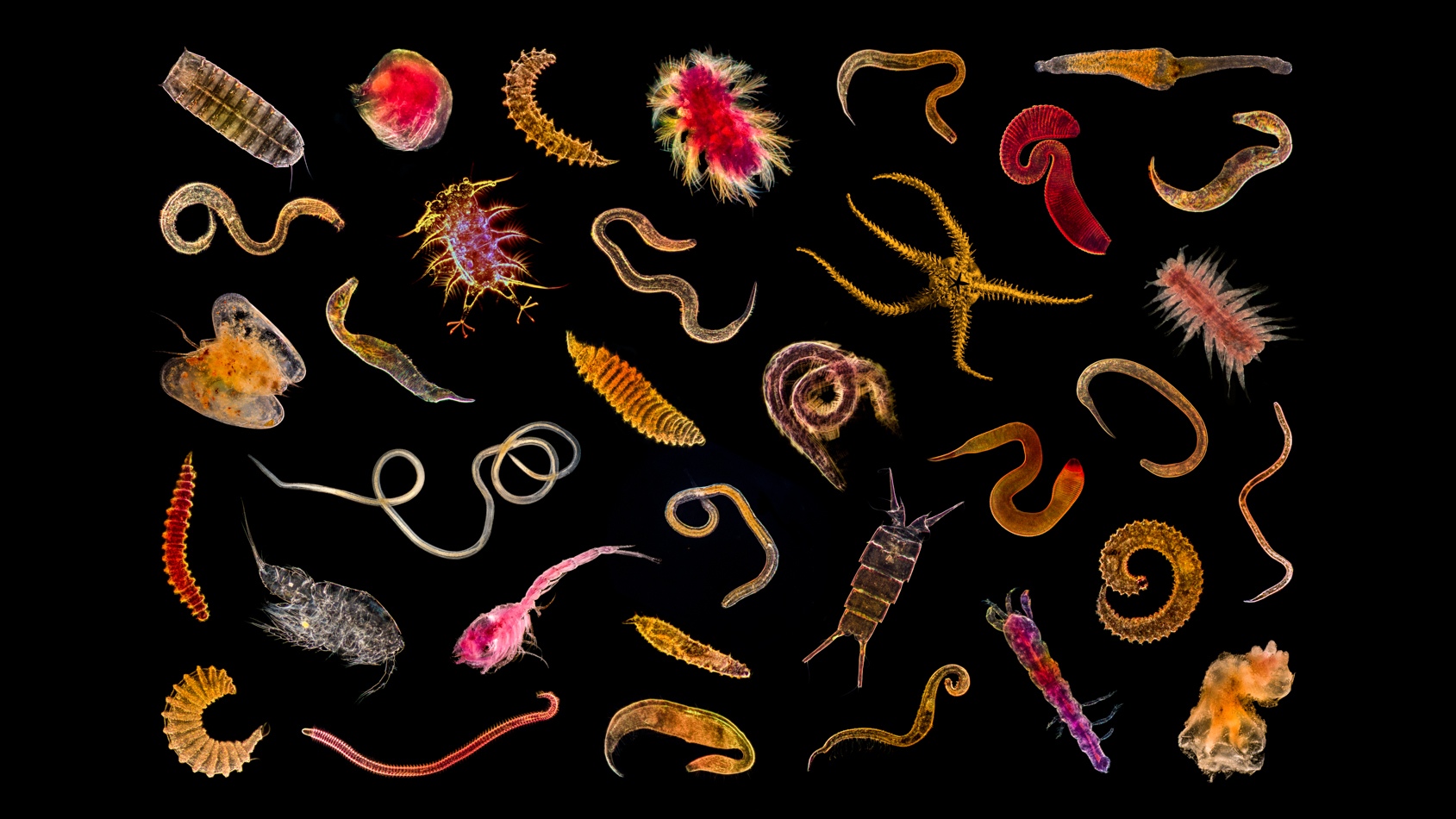
POURQUOI PAS LES ABYSSES ? IN THE NEWSPAPERS
The project "Pourquoi pas les Abysses ?" has been widely presented in the French and international press such as Stern, XL Semanal, BBC Wildlife Magazine, TMV, Terre sauvage, Sciences et avenir, Chasseur d'images, Image & Nature, Plongez, Géo, L'OBS, Nexus, Pandacraft explore, Ça m'intéresse, Futura, Science & vie...
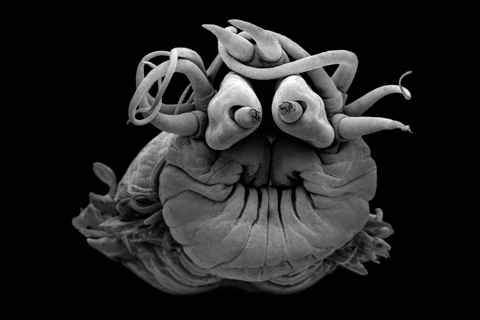
Nereididae worm (Polychaeta)
© Gilles Martin / Ifremer
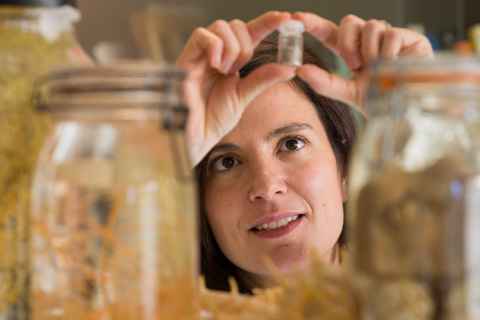
Daniela Zeppilli, oceanographer for the IFREMER in Brest
© Gilles Martin / Ifremer
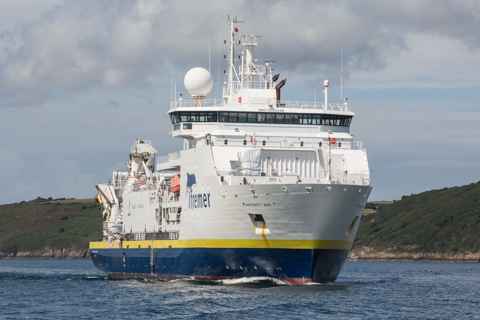
The « Pourquoi pas ? » during the AMIGO mission
© Gilles Martin / Ifremer

Shooting on the « Pourquoi Pas ? »
© Daniela Zippeli / Ifremer
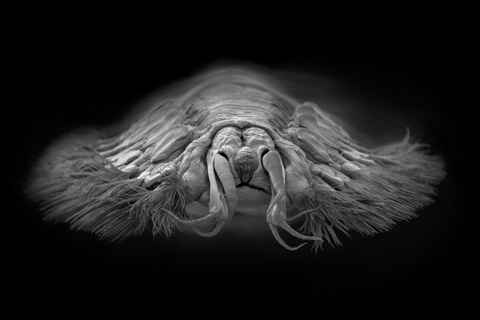
Polynoidae worm (Polychaeta)
© Gilles Martin / Ifremer
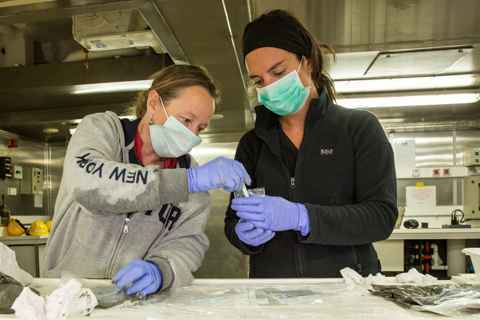
Processing the samples
© Gilles Martin / Ifremer

Polychaete collected at a depth of 5,000 metres
© Gilles Martin / Ifremer
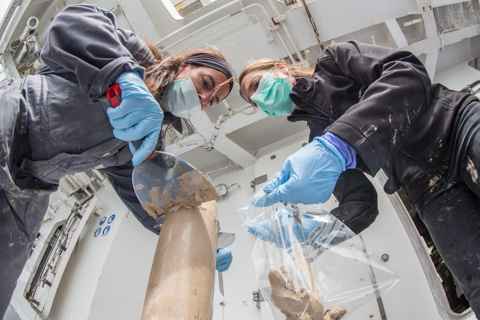
Daniela and Julie searching for specimens
© Gilles Martin / Ifremer
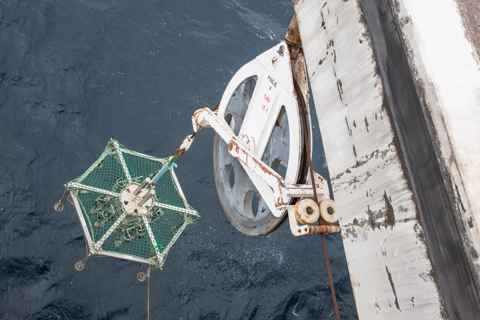
Descent of the Octopus for a coring
© Gilles Martin / Ifremer
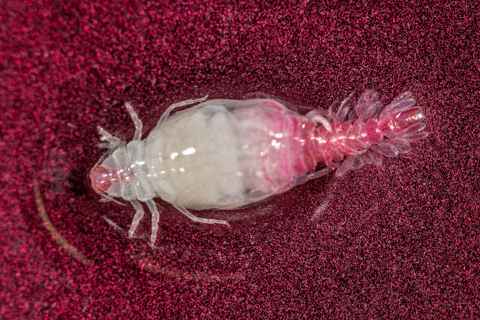
Specimen collected during the AMIGO mission
© Gilles Martin / Ifremer
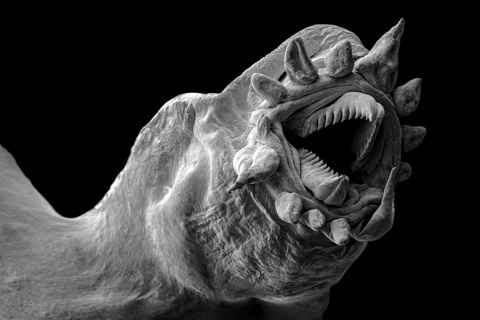
Portrait of a polychaete
© Gilles Martin / Ifremer
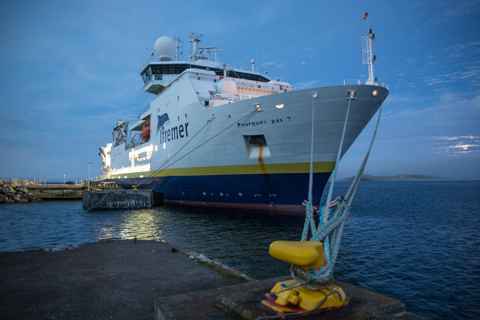
The « Pourquoi pas ? » in Saint-Pierre-et-Miquelon
© Gilles Martin / Ifremer
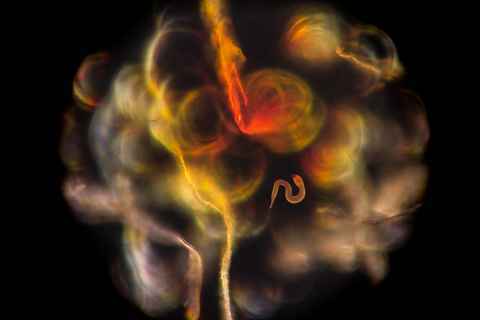
Under the microscope, the meiofauna reveals all its beauty.
© Gilles Martin / Ifremer
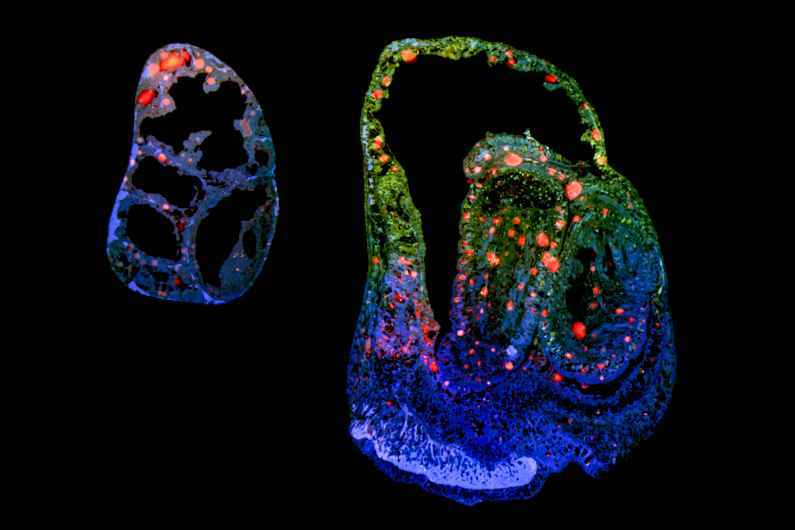
Overview of bacteria
© Gilles Martin / Ifremer
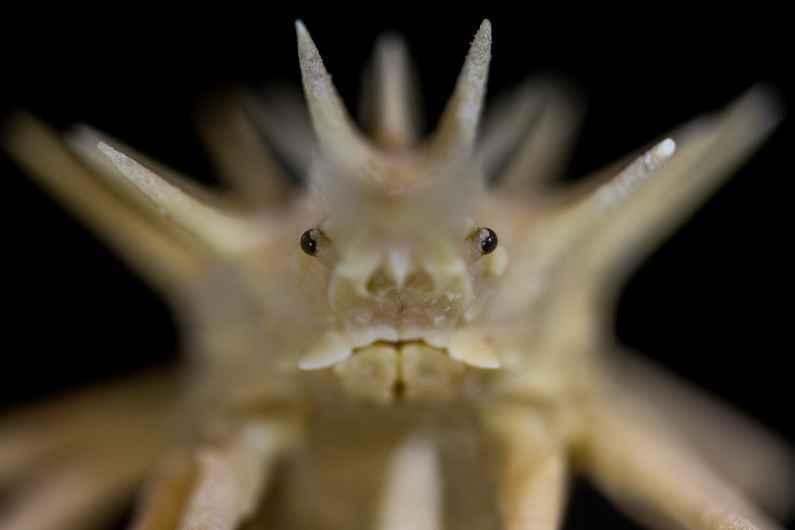
Crab of the majidae family.
© Gilles Martin / Ifremer
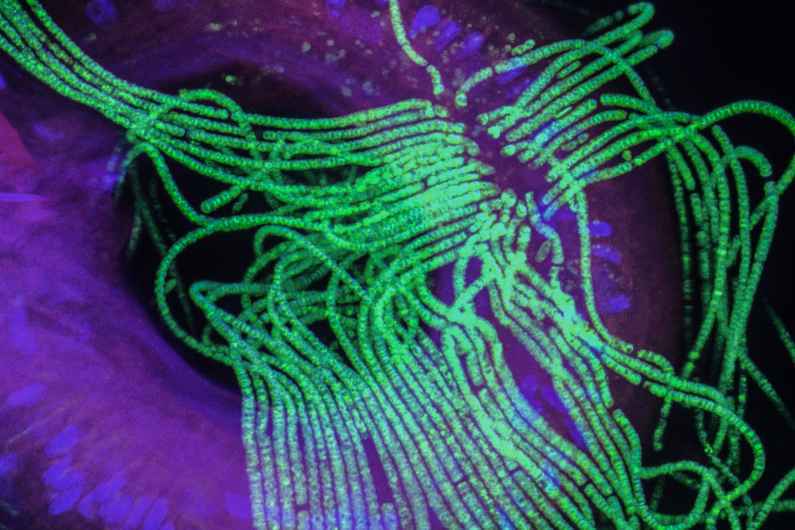
Bacterial colony on a nematode worm.
© Gilles Martin / Ifremer
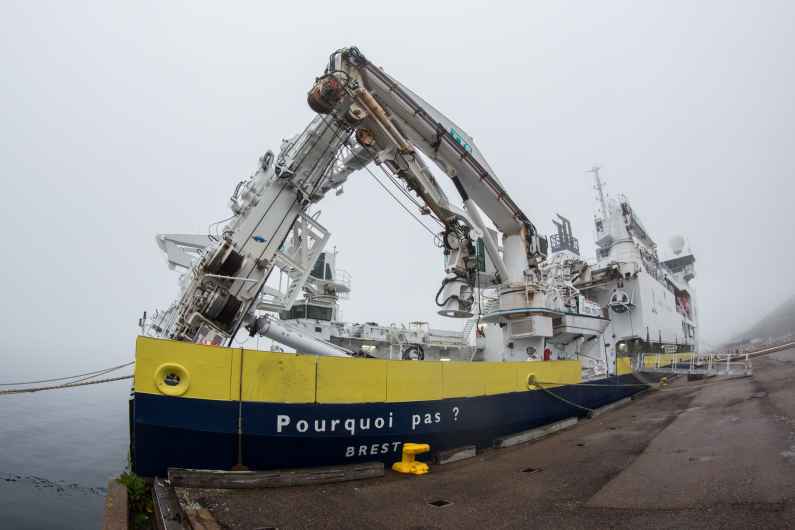
The search boat the Pourquoi Pas ?
© Gilles Martin / Ifremer

The Nautile can dive up to 6000 meters.
© Gilles Martin / Ifremer
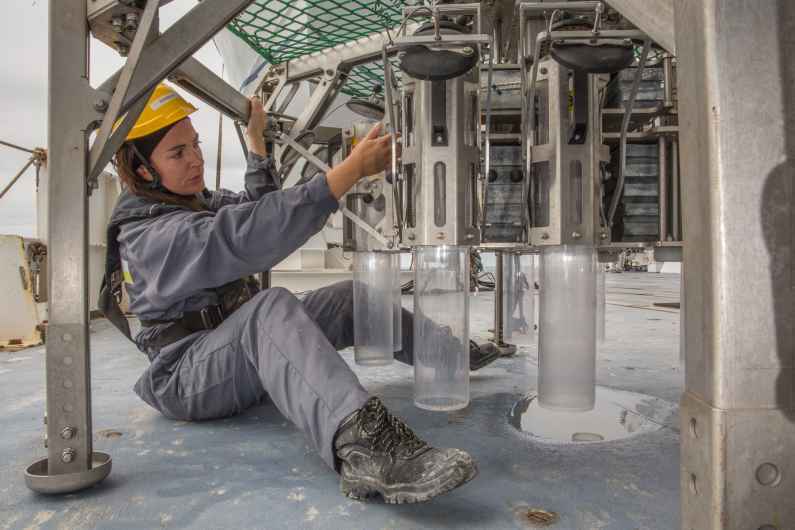
Daniela Zeppilli loading the Ocktopus.
© Gilles Martin / Ifremer
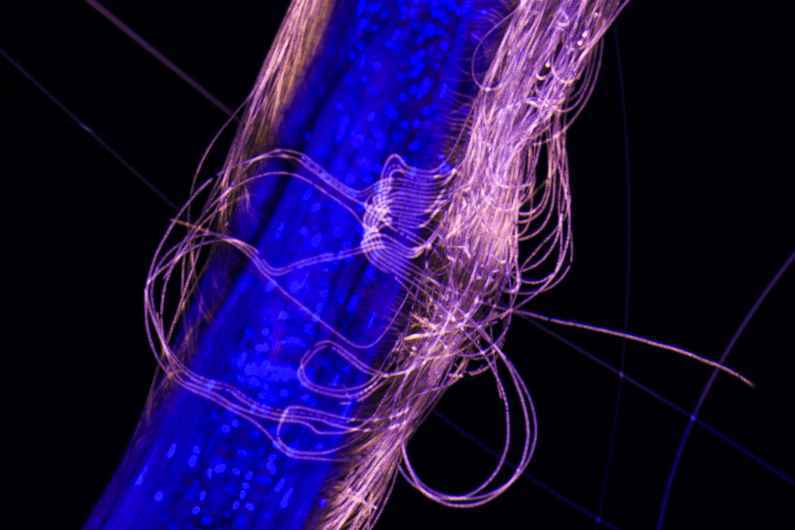
Bacterial filaments on a nematode.
© Gilles Martin / Ifremer
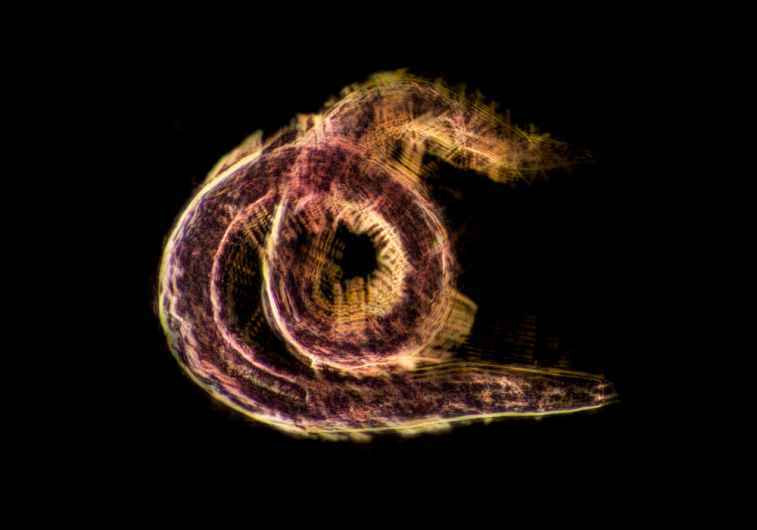
Photo made with an optical microscope using the focus stacking.
© Gilles Martin / Ifremer
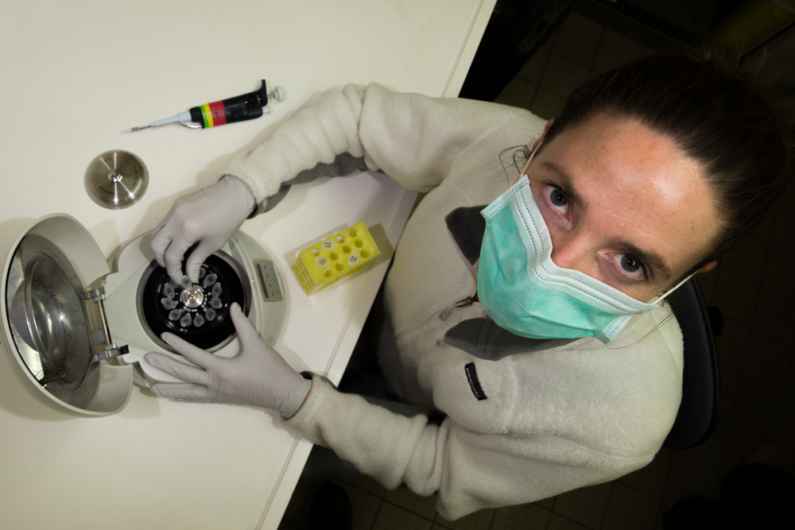
DNA sequencing on the Pourquoi pas ?
© Gilles Martin / Ifremer
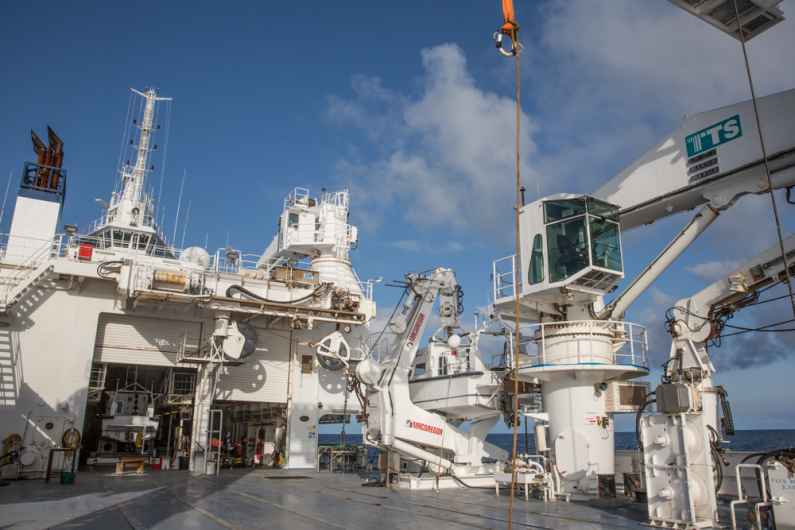
Working deck of the oceanographic ship Le Pourquoi pas ?
© Gilles Martin / Ifremer
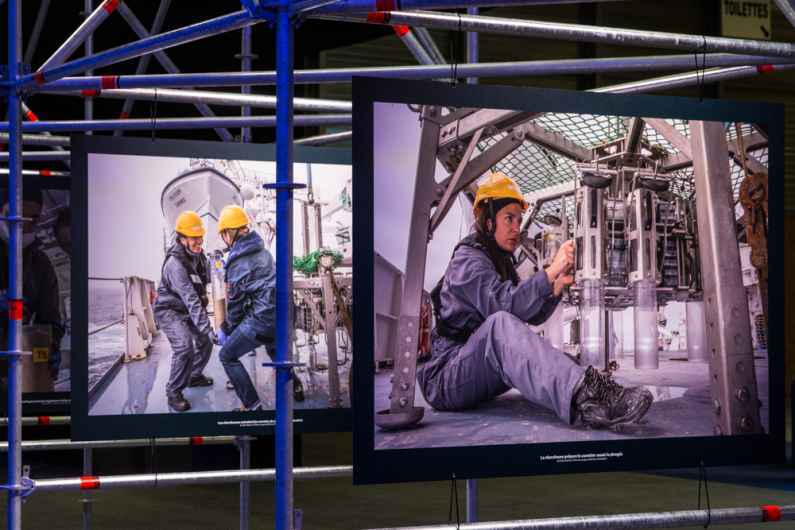
Exhibition Pourquoi pas les abysses ? produced by Ifremer.
© Gilles Martin / Ifremer
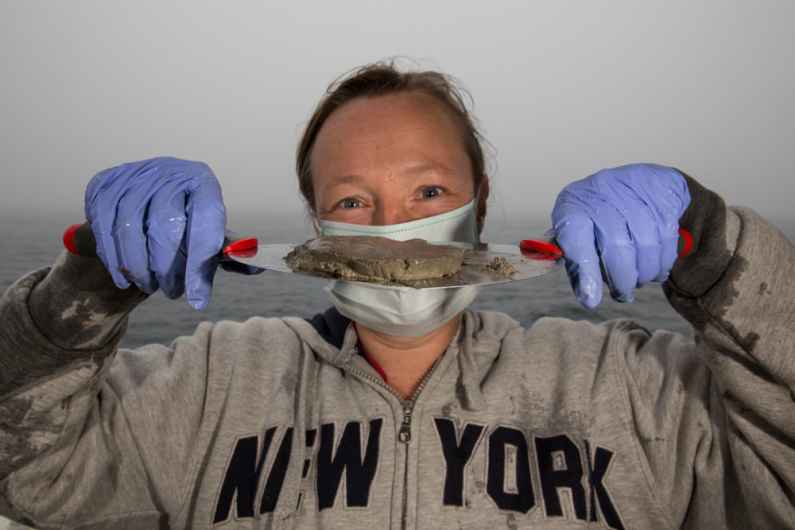
Sophie Arnaud-Haond during the amigo mission.
© Gilles Martin / Ifremer
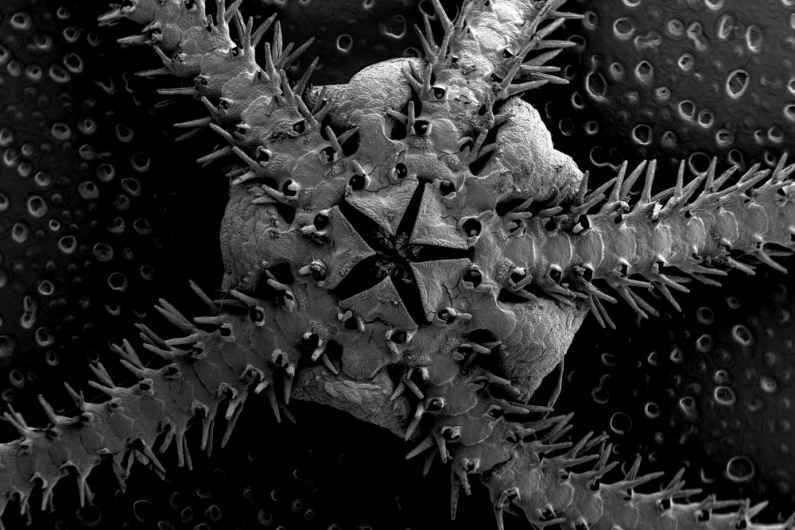
Detail of an Ophiure collected at a depth of 5000m.
© Gilles Martin / Ifremer
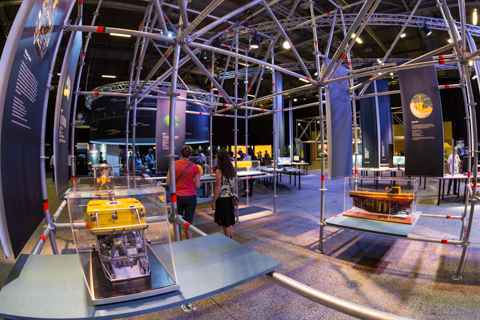
"Pourquoi pas les abysses ?" exhibition at La Mer XexhibitionXL festival
© Gilles Martin / Ifremer
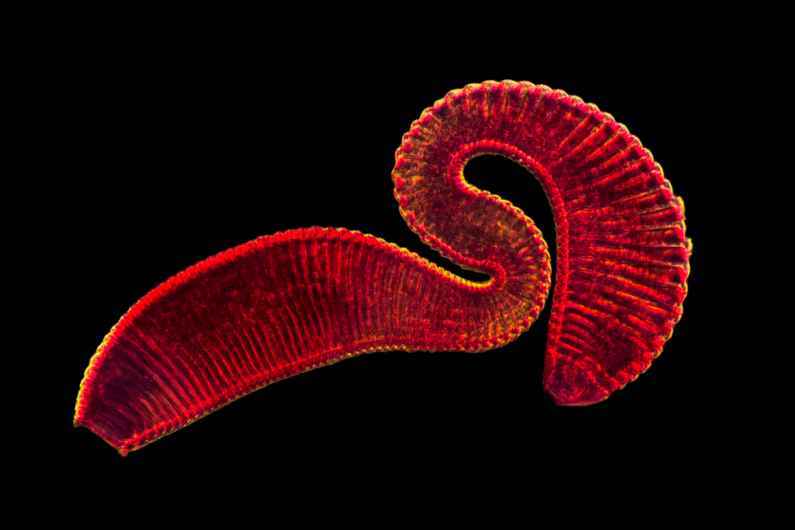
Epsilonema - nematode
© Gilles Martin / Ifremer
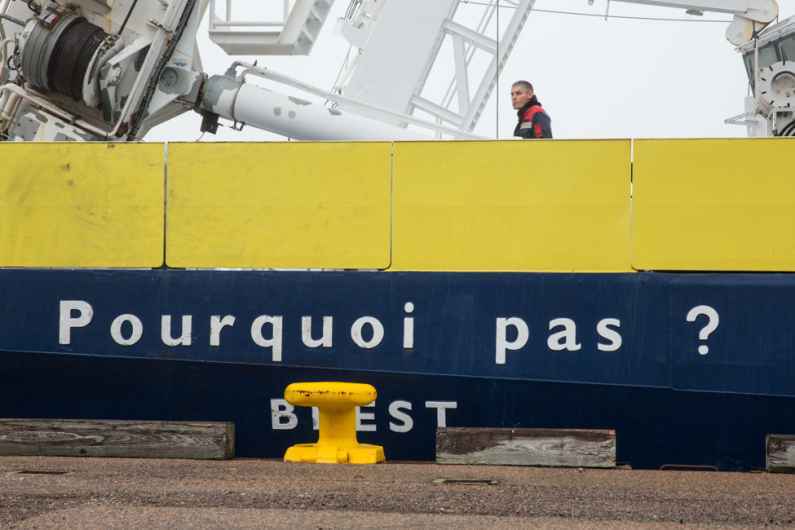
The "pourquoi pas" setting sail
© Gilles Martin / Ifremer
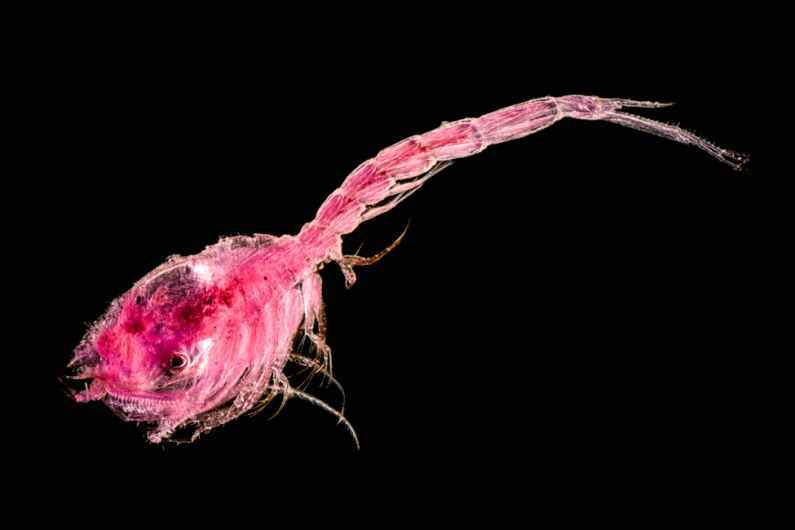
Crustacean cumacea
© Gilles Martin / Ifremer
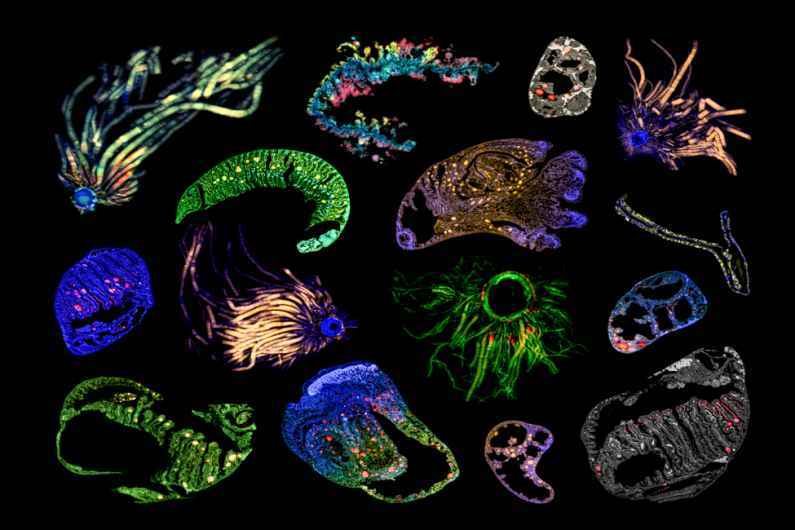
Fluorescent microscopy
© Gilles Martin / Ifremer
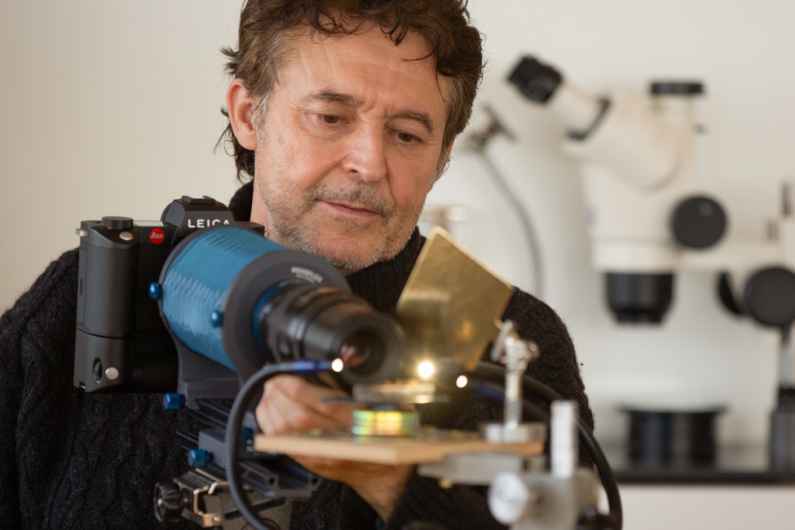
Gilles Martin in his studio in Tours
© Gilles Martin
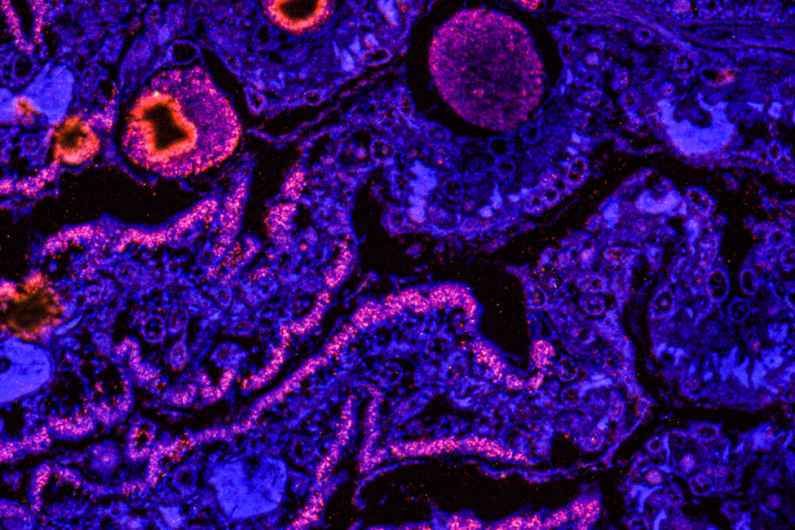
Exhibition and film at Nausicaà
© Gilles Martin

